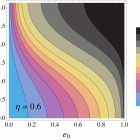"Evolution of massive black hole binaries in rotating stellar nuclei and its implications for gravitational wave detection"
Abstract:
The subject of our study is a binary supermassive black hole (BSBH) in the center of a galactic nucleus. We model the evolution of its orbit due to interactions with the stars of the galaxy by means of 3-body scattering experiments. Our model includes a new degree of freedom - the orientation of the BSBH’s orbital plane - which is allowed to change due to interaction with the stars in a rotating nucleus. The binary’s eccentricity also evolves in an orientation-dependent manner. We find that the dynamics is qualitatively different compared to non-rotating nuclei: 1) BSBH's orbital orientation changes towards alignment with the plane of rotation of the nucleus; 2) BSBH’s eccentricity decreases for aligned BSBHs and increases for counter-aligned ones.
Then we apply our model to calculate the effects of stellar environment on the gravitational wave background spectrum produced by BSBHs. Using the results of recent N-body/Monte-Carlo simulations we account for different rate of stellar interactions in spherical, axisymmetric and triaxial galaxies. We also consider the possibility that supermassive black hole masses are systematically lower than usually assumed. The net result of the new physical mechanisms included here is a spectrum for the stochastic gravitational wave background that has a significantly lower amplitude than in previous treatments, which could explain the apparent discrepancy between the models and pulsar timing array observations.

